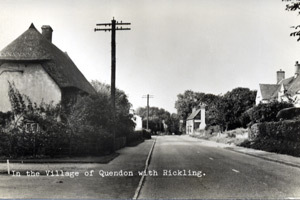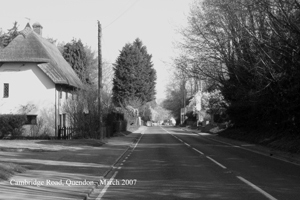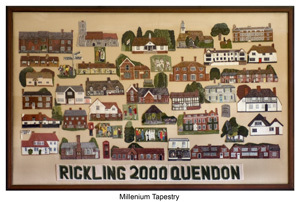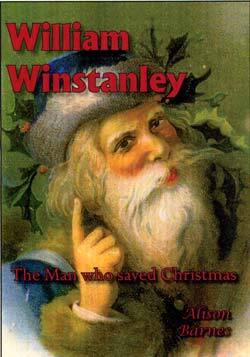In welcoming you to our village and its two churches, we hope these notes will help to make your visit more interesting.
Quendon & Rickling stand 300 feet above sea level on what is a watershed between two infant rivers: the Cam to the east, flowing north through Cambridge to the Ouse and on to the Wash; and the Stort to the west, flowing south through Bishop's Stortford to the Lea, and on into the Thames Estuary.
Palaeolithic and Neolithic remains found in the area suggest people were living here thousands of years ago. The name of Richelinga is found in the Domesday Book in 1086 and is said to mean either Ricela or Ricula's people. Ricula was Queen of Essex in the 6th Century. Quendon is derived from the Old English words scene and den, meaning women's valley. It is probable that at one time the village of Rickling was based nearer to its church, but due to either plague or fire moved to join its near neighbour, Quendon. Another theory for the church being so far from the present village is that it was next to one of the busy old drovers road from East Anglia going west to meet the road going from Buntingford to London along what is now the A10. When the main road was improved going through Quendon a lot of the population around the church started to move to what is now Rickling Green to be close to this transport link.
A walk through the village will show many houses dating from the 17th and 18th centuries, exemplifying local materials and building traditions. These include local flints, bricks from local brick works, tiles and thatch, half-timber as on Manor Farm, plaster and pargeting on many houses and weatherboarding. Some of the houses supersede much earlier ones; Quendon Court, for example, built around 1750, is known to be the third house on this site. Panelling in the old Coach & Horses pub, subsequently renamed The Quendon Arms (now a private house), is older than the brick frontage onto the B1383.
Houses remain, whereas the information of past inhabitants is all too scanty. Quendon is said to have connections with the Pamphilon family, of which several members were noted violin makers and with the Winstanley family. Henry Winstanley (of Littlebury) designed the first Eddystone Lighthouse but his uncle, William Winstanley, who is known as Man who Saved Christmas, lived in Quendon. See below for details of a biography of the latter.
In the first half of the 20th century most of the cottages would have been owned by the five farms located in Rickling and Quendon, and most people worked in the village. There were three pubs, a working mill, a village policeman, two shops, a shoe mender, carpenters capable of making coffins, and many other tradesmen. In earlier times the farms had herds of cows and sheep, etc.
The village pond, Dell Pond, was filled by water which drained naturally from the fields via ditches, and householders with geese would take them to graze the grass and drink the water.
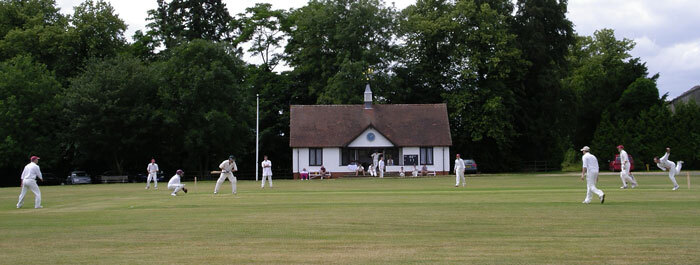
During the war the army occupied Maces Place, a large house which stood facing the Green. The villagers gave refuge to many evacuees which swelled the numbers of children at the village school.
Both Quendon and Rickling churches are over 800 years old. In Quendon Church, above the chancel, there are coats of arms of the De Mandeville and De Bohun families.
As in most villages, the majority of men no longer work on the land, which is now almost entirely arable farming. People now have to travel further afield to work, but Quendon and Rickling still manage to retain their village character.
The tapestry above hangs in the Village Hall and was created by local ladies to commemorate the Millenium. See Village Hall History for more information.
THE MAN WHO SAVED CHRISTMAS by Alison Barnes
This is the biography of William Winstanley which describes how he single-handedly revived the Christmas customs after the Restoration and death of Oliver Cromwell, and how the "Dickensian" Christmas stems from him.
William Winstanley was one of the most popular writers in England in the latter part of the seventeenth century. Author and broadcaster Alison Barnes has delved into local and national records to piece together this fascinating portrait of the man who ensured that the Puritanical regime of Oliver Cromwell did not succeed in eradicating our turkeys, mince pies, decorations and games.
The book can be ordered online from the publishers at Poppyland Publishing, or from a local bookshop, ISBN 0946148821. Some copies may also be available from one of the Quendon Churchwardens. See Churches for contact details
